- Alexander,
also known as Sikander esp. in Persia, was Great but of little relevance to
India. Conversely, Chandragupta Maurya was the first king who ruled over most
of what is known as India today. Should the phrase be reworded in memory of this
son of Bharat?
You
might have heard of the movie Jo jeeta woh Sikandar where Sikander is
the victor. In the 1941 released Sikander,
starring Prithviraj Kapoor, Sikander is Alexandra the Great from Greece. A
friend sent me a message asking why this phrase because Alexandra had little
relevance to modern day India. Plus he did not conquer all of India.
If
he conquered countries of the Middle East, why should Indians use a phrase
honoring him as Victorious King? Instead, should Alexander be replaced by Chandragupta
Maurya, the accepted hero of that time?
So I was motivated to discover origin of the word Sikander, Alexander’s India raid.impact and Chandragupta Maurya’s achievements.
Is
Sikander a Hindi word?
No,
it is a Persian word. Note that Persian was the official language of India till
1837.
B N Goswamy wrote in The Tribune, “Alexander’s is a prominent presence in some of the greatest works of Persian literature: from the Shahnama of Firdausi to the Khamsa-s (quintet) of Nizami and Khusrau.” Sikander means conqueror, name given due to Alexander’s conquests.
Read How Alexander the Great became Iskandar Zulkarnain
Author and Freedom Fighter K M Munshi wrote on the Greeks &
post Ashoka
Shri K
M Munshi an educationist,
freedom fighter, founder of Bharatiya Vidya Bhavan (1938), author wrote in the Foreword to Volume 2 of The
History and Culture of the Indian People published by Bharatiya Vidya Bhawan-
“During Mahapadma Nanda’s time in 326 B.C. Alexander, the Macedonian, entered North-West India, the erstwhile satrapy of the Iranian empire. He could neither face the Nanda empire nor leave an impression on the people. The Indians fought him heroically; yielded for the time being only to the superior military organization of the Macedonians; and soon after under Chandragupta (324-300BC) drove out the Greeks from Punjab in a brilliant war of liberation.” xv
“Consolidating his position in the Punjab, and inspired by his teacher Chanakya, Chandragupta marched on Pataliputra, killed Dhana Nanda, assumed the sovereignty of Magadha, vanquished Seleucus, the Greek, who was moving towards India to recapture Alexander’s lost possessions. For the first time the writ of one emperor ran in the country through a hierarchy of centrally appointed officers.” Xv and Xvi
“Post Ashoka (273-236BC), the grandson of Chandragupta, due to a lack of a vigorous military policy, the outlying provinces rose in revolt. The Greeks invaded India and advanced into the country up to Ayodhya and Chitor. Further disintegration was halted only when Pushyamitra (187-151 BC), the Brahmana minister of Sunga dynasty, took over what was left of the empire. The Sunga dynasty vanquished Greek invaders.”
Xvii
The
Nanda king at the time of Alexander invasion was called by them as Agrammes. It
is said that when king Porus (Paurava) escaped from Alexander he escaped into
the adjoining territory of the Nanda king.
The
following history is based on Volume 2 of The History and Culture of the Indian People for
which the entire credit goes to the volume authors and editor. I have only
compiled.
Briefly
about Alexander conquests
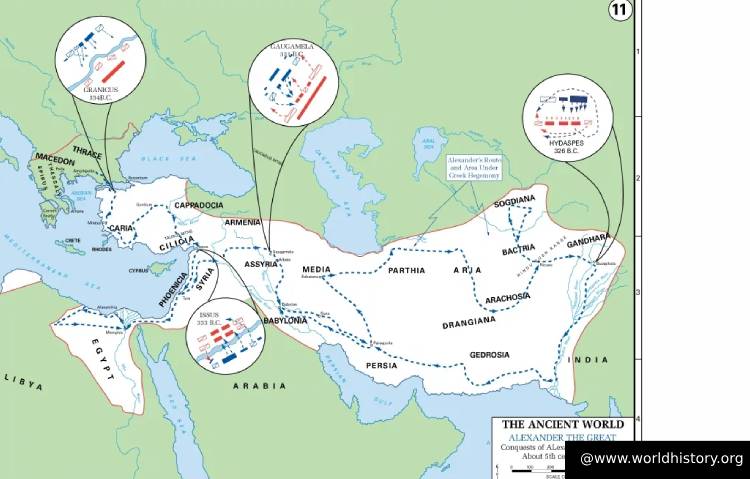 Map shows conquests.
Map shows conquests.
His
conquest was that of Persia where he defeated king Darius III and burnt his
capital Persepolis in 330 B.C. At the beginning of 327 B.C. he had completed
the conquest of Eastern Iran beyond the Hindu Kush by overrunning Bactria and
region now known as Bokhara. In May 327 B.C. he advanced towards India.
Ambhi,
son of the old king of Taxila, sent gifts and envoys to Alexander because of
hostility to his powerful neighbor Porus, who ruled territory between Jhelum
and Ravi and was bidding for supremacy in the region beyond the Ravi and
threatening the frontiers of Taxila on the west.
As
he moved into North western India Alexander faced resistance from Ashtakaraja,
free people of region of Swat, Kunar and Panjkora, Assakenoi inhabitants of the
eastern part of the region (modern Kafiristan in north-east Afghanistan).The
next stage in the campaign was the siege of the strong hill fort Aornus or
Varana (located near river Indus in modern day Pakistan). The problem facing
Alexander now was crossing of the Sindhu river.
In the spring of 326 B.C. Alexander set foot on Indian soil proper and held Durbar at Taxila. He moved on to the banks of the Jhelum, crossed the river one night, slain Porus’s son in battle. The overnight rains rendered the ground slippery which went against Porus who fought bravely till the last. He reinstated Porus to which he added further territories to the east. His further advance was impeded by revolts from regions conquered by him. They were quelled. He marched up to the Ravi and won battles. Lastly, he came to river Beas.
Thus,
areas invaded by him fall mostly in modern day Afghanistan/Pakistan and parts
of Punjab.
Alexander
Retreat
The
soldiers revolted in July 326 B.C. and refused to proceed further. He began to
return via the river Jhelum and reached its confluence with the Chenab. Here he
faced determined opposition led by the Malavas and Kshudrakas. In trying to
scale the wall of a stronghold Alexander was severely wounded. Other republican
peoples resisted Alexander. He reached the last confluence of Punjab rivers
with the Sindhu in the winter at the start of 325 B.C.
In
September 325 B.C. Alexander left Pattala and proceeded to Babylon through
Gedrosia. Two years later he died at Babylon. (356 to 323 B.C.)
Impact of Alexander’s raid
The
effects are overstated sometimes. His victories did not result in permanent
Greek occupation of Punjab. What contributed to his success was his strategy in
breaking the centres of Indian resistance one by one, so they did not form a
united front against him. British adopted a similar policy of Divide and Rule.
“The 13th Rock Edict of Asoka refers to five Greek rulers by name, and it is claimed that on account of the activities of Ashoka’s missionaries his dhamma was followed in their dominions. Their names indicate that at that time India has intimate relations with the western world. Also, Megasthenes stated that were was a special department in Pataliputra to look after foreigners, indicates their influx in large numbers.” Vol 2 pg 616
He
divided his Indian conquests into seven satrapies of which two were outside
India proper. Alexander
invasion promoted the political unification, smaller states now merged in
larger ones,
thus paving the way for the growth of the Indian empire that was shortly
founded by Chandragupta Maurya. The only permanent result was that it opened
communication between India and Greece.
Chandragupta
Maurya (CM)
A
factor that helped CM was the growing difficulty of the Greek position in
Punjab. There were rebellions. It is believed that CM began the war of
liberation probably, in the lower Sindhu valley, before 321 B.C. His date of
accession was around 324 B.C. He defeated the Nanda king.
The
Greek king Selecus, who has succeeded Alexander was moving towards India to
recover lost possessions. He reached Sindhu around 305 B.C. Selecus had to
purchase peace by ceding to CM territories, the capitals of which were now
known as Herat, Kandhar and Kabul.
CM
had a vast empire. Based on inscriptions and internal evidence it shows that
the empire extended to Mysore in the south and up to the borders of Persia in
the north-west. Saurashtra was part of his empire.
 Map of Chandragupta Maurya Empire.
Map of Chandragupta Maurya Empire.
The Greek ambassador to the court of CM Megasthenes wrote a book on Maurya’s administration but the book is lost.
Greek
writers make a reference to the royal road leading from the north-west frontier
to Pataliputra, the precursor of the modern Grand Trunk Road, with a length of
about 1150 miles. Read
about Grand Trunk Road
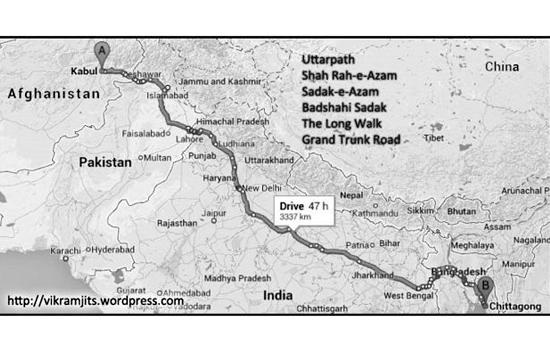 Grand Trunk road.
Grand Trunk road.
CM’s son was Bindsura (300 to 273 B.C.) and grandson Asoka (273-236 B.C.)
Some
pictures from Sravanabelgola in Karnataka where Maurya is said to have spent
his later years.
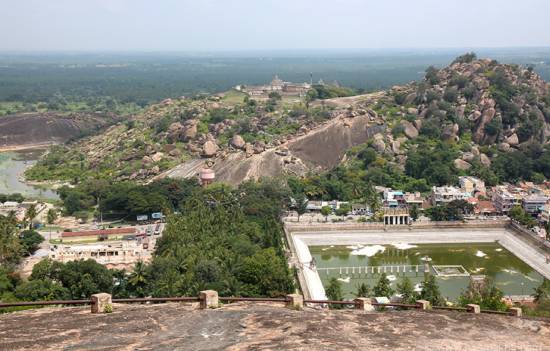 Chandragiri Hill at Sravanabelgola is where Chandragupta Basti is.
Chandragiri Hill at Sravanabelgola is where Chandragupta Basti is.
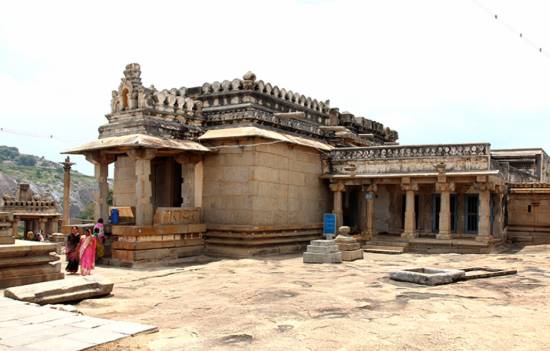 Left to right last is Chandragupta Basti.
Left to right last is Chandragupta Basti.
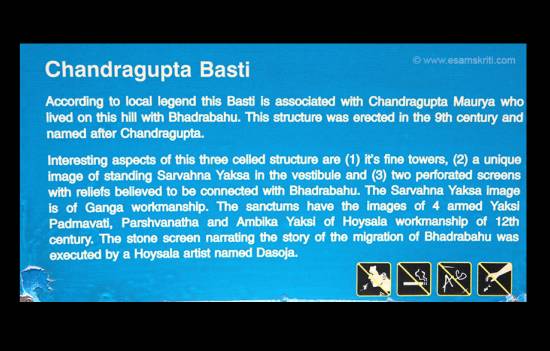 Chandragupta Maurya lived on this hill. This was erected in the 9th and named after
Maurya.
Chandragupta Maurya lived on this hill. This was erected in the 9th and named after
Maurya.
Conclusion
Alexander
was a great warrior but he mostly captured areas outside modern day India. Conversely,
Chandragupta Maurya assisted by Chanakya ruled over large part of modern day
India and is thus more relevant to India today.
Further,
Sikander as a word is Persian. Perhaps, it might be found in Hindustani which
is combination of Hindi and Urdu. According to an earlier article Urdu is about
70% Persian and Arabic. Read
more here
Since
Bollywood uses a lot of Urdu, it is unlikely they will replace Sikander with
Chandragupta Maurya.
If
you reader, as a common Indian are convinced than shift to Jo Jeeta woh
Chandragupta Maurya. It is part of the Decolonization process.
Chandragupta Maurya
should not be confused with the Guptas who dominated India from 320 A.D. for
about three hundred years. Read about
Gupta kings Chandragupta I, Samudragupta, Skandagupta etc
Also
read
1.
Relevance of
Chanakya
2.
Study of
Literary Sources and Inscriptions during the Mauryan era